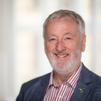As I write this blog, England is now living with Covid-19, which seems odd given that in the week ending April 1st almost 800 deaths were registered provisionally in England as involving Covid-19. This corresponds to around 9 per cent of all registered deaths in England, and while some may say this is still a substantial number, it is clearly not enough to prevent us from living with Covid-19, perhaps especially given the fact that almost 9000 such deaths were registered in England and Wales in week 16 of 2020.
If then we are now living with Covid-19, does that mean we are returning to normal, and if this is the case, what will this normal look like?
Back in March 2020, my colleague Professor Sarah Harper penned a blog for this site and stated
“Life could never be the same again. For many families, life will never be the same as they face the loss of dearly loved family members. For the rest of us, life could change if we start now to build on the initiatives set in place at this time of global emergency.”
Could life really change for us as Harper suggests? Well, the doubts remain.
In October 2021, I penned a blog for this site, looking at some of the data we have been bombarded with during the different waves of and responses to the various variants of the virus. Some of the less often – if at all – cited data collected by the Office for National Statistics (ONS) go back to March 2020, when Professor Harper was penning the blog cited above. The ONS asked a sample of the population just this same thing: when will life return to normal? It was, of course, early days. Only 11 per cent of the population in March 2020 thought returning to normal might take 12 months or even more.
Being great data collectors, the ONS repeated this survey, asking the same question, almost on a weekly basis. By the end of 2021, more than a third of the population now thought it would still be more than 12 months before life returned to normal. And the latest round of the survey for the period March 16th to 27th 2022 indicates that 30 per cent of the population in Great Britain still feel that it will be more than a year before their life returns to normal. And 14 per cent think their lives will never return to normal.
As my Oxford colleague Professor Danny Dorling observes in his appraisal of these survey data: Our faith in a return to normality has collapsed. And he continues: At some point, a way of living that most of us describe as normal will arrive – it always does. But it will be a new normal.
Let me return to my opening comments. What will this new normal look like? Is it simply living with Covid-19 that is the new normal?
Can we learn anything about our new normal from the Spanish influenza pandemic of 1918, a pandemic which it is believed killed at least 50 million people and infected around 500 million globally. There are most certainly uncanny similarities in the way populations and authorities reacted to the Spanish flu on the one hand and Covid-19 on the other hand despite the fact that modern-day understanding of viruses is immeasurably greater than the almost non-existent understanding back in 1918. Social distancing and masks characterise both pandemics, and opposition to the wearing of masks manifested itself back in 1919 too in the form of the anti-mask league of San Francisco.
As the Spanish flu receded and the horrors of World War I finally ended, much happened in what was the subsequent new normal of the 1920s.
At an individual level, people began to view very differently not just their own health and their need for healthcare but also their need for better access to medical and scientific information. The post-COVID-19 new normal may well see something similar as we have become more aware of the health risks in our surroundings and this may mean we expect different responses from our healthcare systems. Some – many perhaps – will doubtless continue to wear masks. Those coughing and sneezing in public may be frowned upon in this new normal.
We have during the various lockdowns imposed by government discovered the value and importance of social interaction, and in particular our eyes have been opened to the vulnerability of those – both old and young – living on their own with little or no contact with others. But will we act on our experience as we move into this new normal? Will we become more compassionate and caring?
There are concerns – based on past experience – that the legacy of Covid-19 will be a surge in other diseases, such as Parkinson’s and Diabetes. Studies of the long-term prognosis of survivors of the 1918 Spanish Influenza revealed an unusual trend, namely that those who were either infants or in young adulthood at the time of that pandemic appeared to have been two to three times more likely to develop Parkinson’s disease at some point in their life than those born at different times. There would seem to be contradictory evidence of the impact of viral infections on type 1 diabetes although the general hypothesis is that viral infections play a causative role.
So we may now be living with Covid-19, but we may also be living with as yet unknown health outcomes which scientists will be monitoring closely in the months and years to come.
About the Author
George Leeson is a Professorial Fellow at the Institute of Population Ageing, where he co-ordinates the Latin American Research Network on Ageing (LARNA) and the Central and Eastern European Research Network on Ageing (EAST).
Opinions of the blogger is their own and not endorsed by the Institute
Comments Welcome: We welcome your comments on this or any of the Institute's blog posts. Please feel free to email comments to be posted on your behalf to administrator@ageing.ox.ac.uk or use the Disqus facility linked below.













